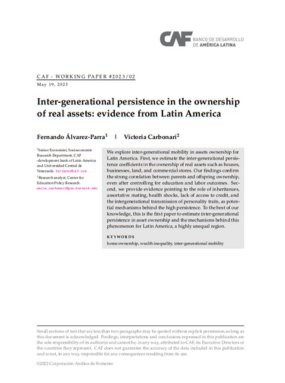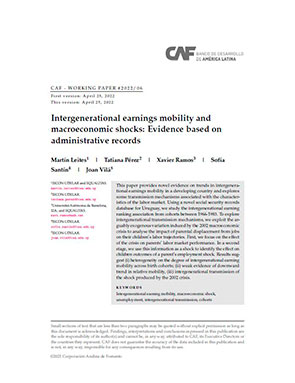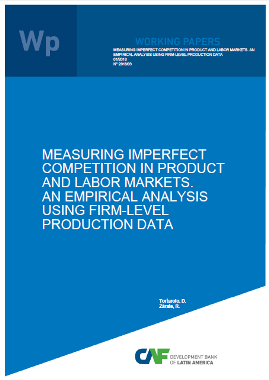Mostrar el registro sencillo del ítem
Intergenerational transmission of teen childbearing in Latin America
| dc.contributor.author | Machado, Matilde P. | |
| dc.contributor.author | Mora, Ricardo | |
| dc.contributor.author | Olivo, Karen | |
| dc.coverage.spatial | América Latina y el Caribe | es_ES |
| dc.date.accessioned | 2021-12-14T21:45:53Z | |
| dc.date.available | 2021-12-14T21:45:53Z | |
| dc.date.issued | 18/07/2023 | |
| dc.identifier.citation | Machado, M. P., Mora, R., & Olivo, K. (1st version, November 25th, 2021-Current version, June 9th, 2023). Intergenerational transmission of teen childbearing in Latin America and the Caribbean. Caracas: CAF. Retrieved from https://scioteca.caf.com/handle/123456789/1840 | |
| dc.identifier.uri | https://scioteca.caf.com/handle/123456789/1840 | |
| dc.description.tableofcontents | Using DHS data for six Latin American countries, we estimate the relation between a mother’s teenage childbearing status and that of her daughter. Restricting the estimating sample to mother-daughter matches in the data leads to a large negative selection bias in the estimated effect because missing matches are non-random and affected by the teen childbearing status of mothers and daughters. We deal with this selection bias by developing a Maximum Likelihood estimation using all available data, including incomplete mother-daughter pairs, and allowing missing observations to be endogenous. Our results show that being the daughter of a teen mother increases the chances of being a teen mother between 8.7 and 26.2 percentage points (between 61 and 172%). We conclude that the prevalence of such high intergenerational transmission is at the core of persistent high teenage childbearing rates in Latin America and suggests alternative public policy fixes. | es_ES |
| dc.description.tableofcontents | Latin America has experienced high rates of teen childbearing for decades. Using DHS data for six Latin American countries, we estimate the relation between a mother’s teenage childbearing status and that of her daughter. Restricting the estimating sample to mother-daughter matches in the data leads to a large negative selection bias in the estimated effect because missing matches are nonrandom and affected by the teen childbearing status of mothers and daughters. We deal with this selection bias by developing a maximum likelihood estimation using all available data, including incomplete mother-daughter pairs, and allowing missing observations to be endogenous. Our results show that being the daughter of a teen mother increases the chances of being a teen mother between 9.1 and 23.7 percent age points (75 and 123% relative to the mean incidence of teen childbearing). We conclude that the prevalence of such high intergenerational transmission is at the core of persistent high teenage childbearing rates in Latin America. | |
| dc.language.iso | en | es_ES |
| dc.publisher | CAF | es_ES |
| dc.subject | Cuidado infantil | es_ES |
| dc.subject | Mujer | es_ES |
| dc.subject | Niñez | es_ES |
| dc.subject | Políticas públicas | es_ES |
| dc.title | Intergenerational transmission of teen childbearing in Latin America | es_ES |
| dc.type | workingPaper | es_ES |
| dc.publisher.city | Caracas | es_ES |
Ficheros en el ítem
Este ítem aparece en la(s) siguiente(s) colección(ones)
-
6.1 Documentos de trabajo en investigación socioeconómica
En esta colección se encuentran los documentos de trabajo sobre temas económicos y sociales prioritarios para la región.




